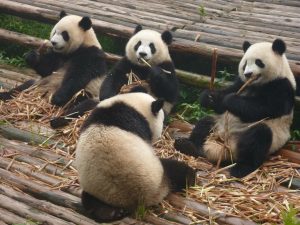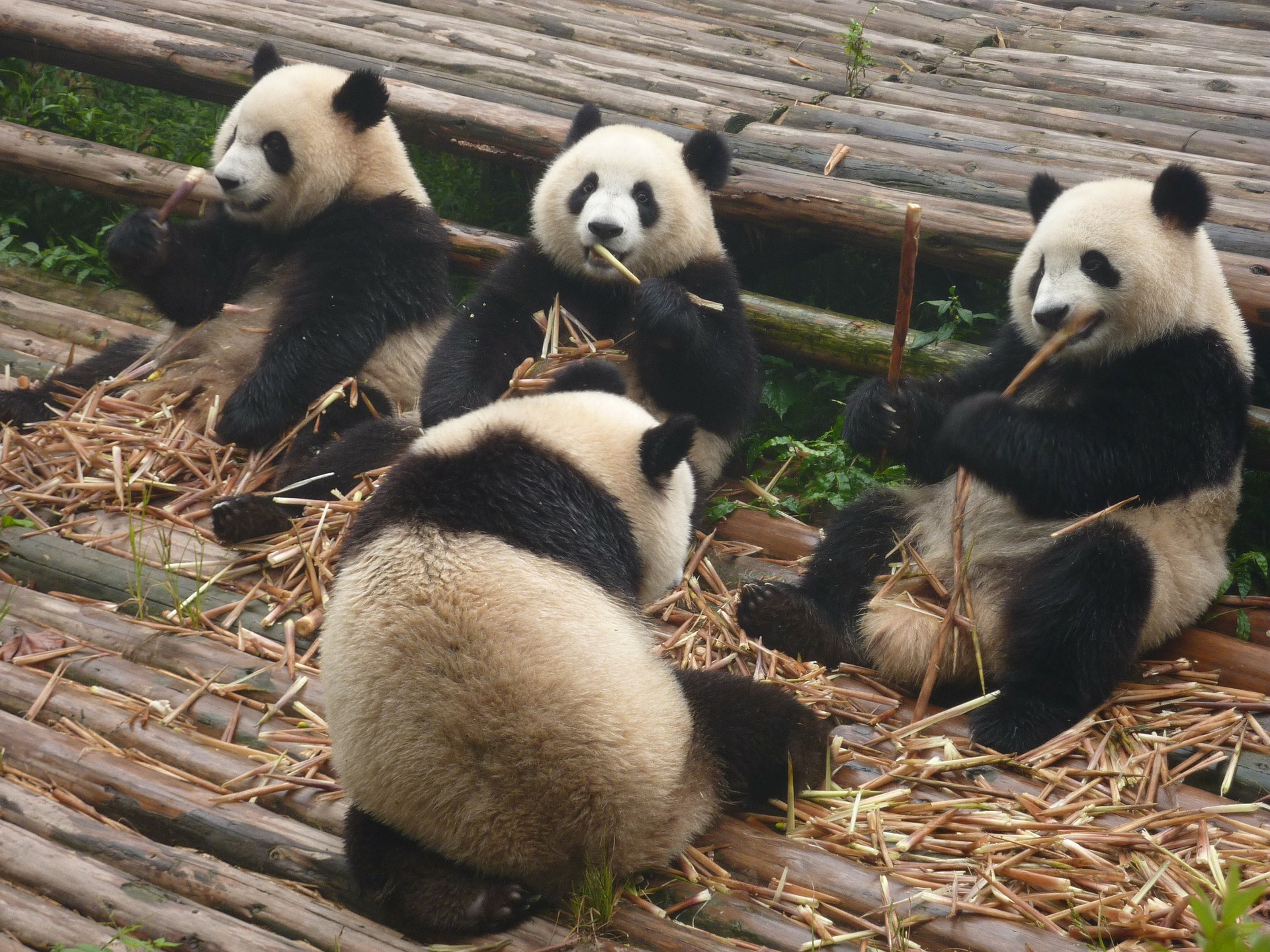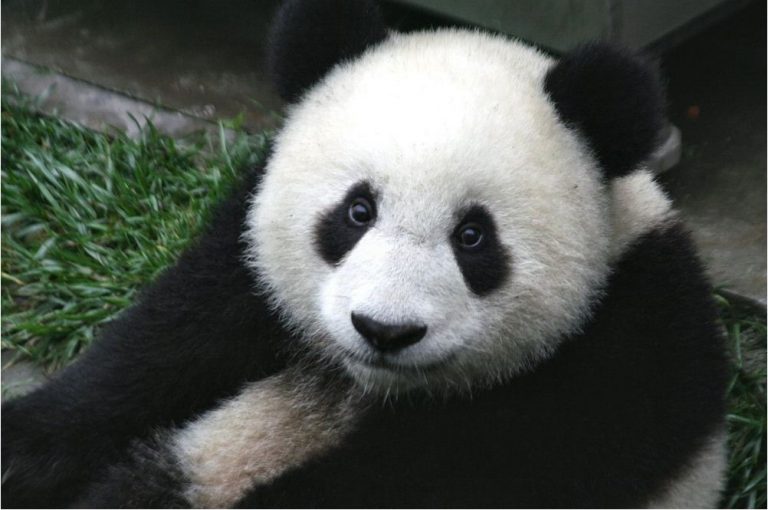Species Profile: The Giant Panda
The Giant Panda is a native bear to China and one of the most recognizable creatures on the planet today.

The white-and-black native bear of China needs little introduction. With its striking, and pleasant appearance and generally pleasant disposition, the giant panda has become a forerunner for all vulnerable animal species worldwide.
Its scientific name, Ailuropoda Melanoleuca, literally means black and white cat-foot.
The name ‘giant panda’ has become its most commonly used name so as to distinguish it from the unrelated but closely named red panda.
Though it is a carnivore, its preferred diet is about 99 percent bamboo.
For many years this creature was hunted for its pelt and was driven out of its habitat by human activities like farming, deforestation, construction, etc. This led to a sharp decline in their numbers until there was international effort made to save them
Fortunately, by 2016, there was enough improvement for the IUCN to downgrade the giant panda from Endangered to Vulnerable. Their population in the wild now stands at 1,864 individuals
1) Scientific Name
Ailuropoda Melanoleuca
2) Scientific Classification:
- Kingdom: Animalia
- Phylum: Chordata
- Class: Mammalia
- Order: Carnivora
- Family: Ursidae
- Genus: Melanoleuca
3) Life Expectancy
The giant panda typically lives for approximately 20 years in the wild and up to 30 years in captivity. The longest recorded age of a panda is that a 38-year female, Jia Jia that died in captivity in 2016.
4) Average Length And Height
The males average shoulder height reaches up to 3 feet (1 meter), and its length from snout to tail is 6 feet (1.8 meters). Female Giant Pandas, on the other hand, grow to about 2.5 feet (76 cm) in height and 5.25 feet (1.6 meters) long.
5) Average/Maximum Weight
Males of the species have a slightly larger build of about 100 kg (220 lbs.) as compared to their female counterparts. Females grow to an average weight of about 80 kg (180 lbs.)
The largest individual weighed 115 kg (250 lbs.)
6) Interaction With/Danger To Humans
Though they are generally considered as peaceful animals, there have been a few cases of aggression and attack exhibited by members of this species. Note that the giant panda has one of the highest bite force among land carnivores so it can certainly inflict severe injury on humans in self-defense.
These pandas have featured in circuses, where like their cousins, the bears, they exhibit strong learning and cognitive skills: they are also adept at performing tricks. In fact, they were also a common feature in zoos from the 1800s to the 1980s.
Unfortunately, humanity’s continued destruction of this animal’s natural habitat has affected the population and well-being of this animal significantly.
7) Reproduction Details

Giant pandas reproduce at very slow rates. A panda will give birth about four to five times in its lifetime. Pandas are able to mate from between four and five years up to about twenty-years. The mating season takes place within the spring season between the months of March and May yearly.
Mating is initiated by the female leaving a special odor in its territory to signify its readiness for copulation. The male of the species will then use their heightened sense of smell to track the female’s location. Fertilized females will gestate for between 95 and 160 days.
Thereafter, the mother will give birth to one or at the most two cubs per litter. At birth, the cubs will weigh between 3 to 5 ounces (85 to 142 grams). Giant panda babies are extremely vulnerable and prone to premature death. Their mothers will nurse them on milk only for about six months before introducing them to eating bamboo.
At 18 – 24 months old, the cubs are left to become self-sufficient and independent of their mother’s care.
8) Diet Of The Giant Panda
The giant panda is considered a heavy eater: it can conveniently consume up to 18 kg (40 lbs.) of food daily.
Though they have a carnivorous gastric system, this animal feeds primarily on bamboo. Furthermore, it feeds only on two species of bamboo plants, the arrow and umbrella bamboos. Nonetheless, in captivity Giant Pandas are able to feed on a wide range of vegetative matter. They will also accept honey, bananas, yams, and oranges.
Their digestive system though containing cellulose-digesting microbes is still not able to completely break down bamboo. Thus, they have a high fecal rate of up to 40 times a day. Baby pandas feed on the feces of their mother in addition to the milk they drink.
During dire times of hunger, pandas are able to revert to their carnivorous ways by feeding on small animals, birds, fish, and eggs.
9) Alternative Names
- Panda bear
- Panda
- Greater panda
- Bear cat
10) Population And Conservation Status
The giant panda population came close to extinction a few decades ago. This was due to various reasons, key among them being the loss of its natural habitat.
Large areas of its natural habitat were cleared to pave way for human settlements and developments. This left the panda with very little living space and even lesser access to food. Since the two species of bamboo it feeds on are seasonal, this animal was forced to resort to seasonal partial starvation due to lack of alternative feeding spots.
Additionally, the extremely low reproduction habits of the panda restricted its ability to repopulate quickly.
Previous hunting of pandas for their soft fur and for zoos and circus especially from the mid-1700s to the late 1800s contributed heavily to the reduction of the species population.
Giant Pandas Today
The current population of pandas in the wild is estimated to be approximately 1800 individuals. Those in captivity, on the other hand, are estimated to be roughly 300. The low population led the International Union for Conservation of Nature (IUCN) to categorize it among the Endangered list of animal species.
However, as at September 2016, the status downgraded to Vulnerable, meaning that the current population is sustainable but with the need for much care and conservation efforts.
To further boost its conservation efforts for this animal, the Chinese government stopped the sale of pandas to zoos from 1984. Rather, China now lends them out on 10 year period contracts. The annual rent fees, marked at US$ 1 million each, is used for various research aimed at preserving the giant panda.
Moreover, cubs born in captivity abroad are considered the property of China and hence are returned on expiry of the contract or may be surrendered upon demand by the Chinese government. Since 2016 a number of pandas have been released and reintroduced into their natural habitat.
11) Ancestry And History
The Panda is descended from the Bear family Ursidae. Its features mean that it can be called a true bear. It is more closely related to the bears than it is related to the similarly named Red Panda which is more closely related to raccoons.
It apparently separated very early from other bear species thus it sits squarely in a category of its own. As a result, it’s often referred to as ‘living fossil.’
There are two subspecies of the giant panda: the primary subspecies, Ailuropoda Melanoleuca and the Ailuropoda Melanoleuca Qinlingensis subspecies also known as the Qinling Panda. The Primary subspecies is marked by the widely popular black and white colors. The other subspecies is characterized by a smaller skull and shades of dark brown and light brown patterns.
Studies indicate that that the Qinling panda speciated from the giant panda approximately 300,000 years ago.
12) Distribution and Habitat
The primary subspecies is found within the larger Sichuan region in China with some found in neighboring Gansu and Shaanxi.
The Qinling Panda inhabits the Qinling Mountains at the bamboo forest zones of between 1,600 to 3,200 meters (4,900 to 13,000 feet) above sea level.
Both subspecies share a common migratory pattern that is dependent on the availability of bamboo.
During summer, giant pandas are able to climb up to a height of 13,000 feet up the mountains to get the highly nutritious blooming bamboo plants. By autumn, the pandas will move back to the lowest fringes of the bamboo regions to feed on the less nutritious bamboo plants.
There are many zoos all over the world that are now homes to this species, you can learn more here about where to see giant pandas worldwide.
References:
1. https://www.worldwildlife.org/species/giant-Panda
2. www.nationalgeographic.com/animals/mammals/g/giant-Panda/
3. http://www.rzss.org.uk/conservation/our-projects/project-search/field-work/giant-panda-conservation
4. https://en.wikipedia.org/wiki/Giant_panda
Photo Credits:
1. https://en.wikipedia.org/wiki/Giant_panda#/media/File:Baby_Pandas.JPG








I spent a lot of time to find something like
this